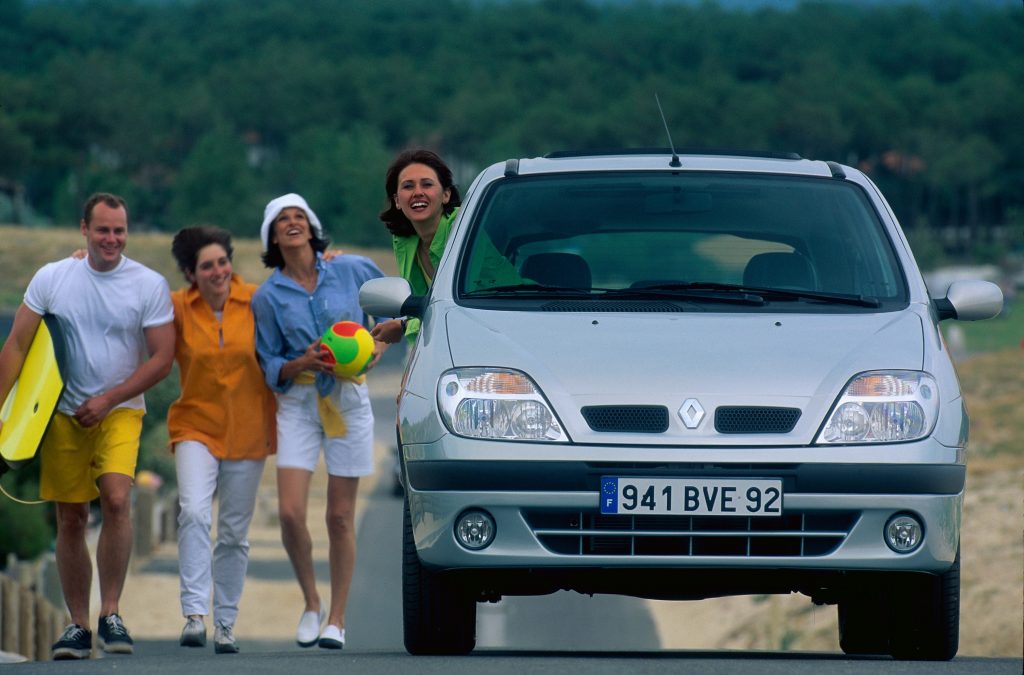
Author: Nathan Chadwick
Photography: Manufacturers
The cult of the crossover/SUV continues unabated. Each week new models appear, seemingly quite similar, all offering bigness aplenty, and all the family functionality one might hope for.
It would be easy to launch into an SUV-bashing rant but the reality is that they’re pretty much the perfect family vehicle for, well, most of the family. Due to their height, they’re easy to get child seats into, and drivers of a certain age can get in without tweaking their sciatica. It’s very easy to say ‘I managed with a hatchback or an estate car’ – but would you rather ‘manage’ or ‘enjoy’?
However, there was a class of car that was far more useful, which was pretty much designed along more utilitarian needs. There was no pretence of trying to offroad, when pretty much the furthest such cars go is the overflow pub car park.
The MPV – or Multi-Purpose Vehicle – can trace its origins back to the Stout Scarab of the 1930s and the DKW Schellaster of the 1940s. The Fiat 600 Multipla and VW Type 2 arguably showe mid-century take-up of the idea, and in the 1970s Chrysler set about crafting a small van with car-like handling – what would eventually become the Minivan.
At around the same time, Giorgetto Giugiaro styled the Megagamma for Lancia, but the Fiat bosses weren’t brave enough to put it into production.
Chrysler’s European divisions were watching, however – and what started as a Matra project for Talbot/Simca, would end up being one of the most beloved Renaults ever made. The Espace would go on to inspire a legion of MPVs, which offered a distinctly different experience to the US Minivan craze.
And it was indeed a craze – the mixture of airy interiors, adaptable seating positions, a high-up seat and flat floors, plus seating for more than five, made them irresistible. They certainly weren’t sexy – but that wasn’t the point. They were comfortable homes-from-homes, a big glass amphitheatre to watch the world go by, if you were a passenger at least. For spirited drivers… well, there was the next pee stop to look forward to, I guess…
We’ve whipped up some of the most memorable from the genre’s 1990s pomp. Think back to the velour, the patterned seat fabrics, the grey plastic and the memories of family outings. Just look at those oh-so-90s press photos – it feels like another age, with enough manmade fibres in the fashions to outlast the Earth itself. Seeing as those fashions are now trendy again – judging by my last visit to the chic vintage shops in London’s Brick Lane – could retro MPVs be the de rigeur trend for Festival of the Unexceptional 2025. Which are your favourites?
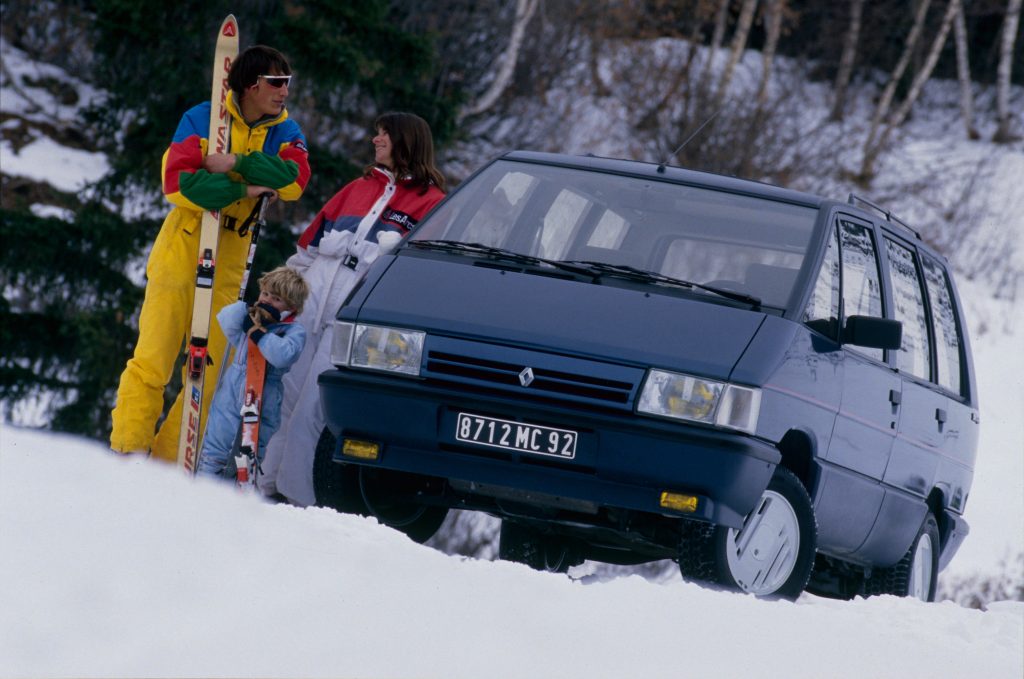
Renault Espace
The original and some would say the best – its sharp rakish design echoed the modernist principles of the late 1970s. Originally conceived by British designer Fergus Pollock, and further developed by Antonis Volanis, the Espace was a Matra concept turned down by Talbot/Simca’s then owner, Peugeot. They went to Renault, who adopted the plan with open arms – and even went on to suggest a very key factor that helped sell the breed, the completely flat floor.
On its 1984 release, the Espace initially struggled – it was entirely different to anything on sale at the time. However, it soon became a stalwart of family life in Britain from its summer 1985 launch, and went on to spawn six generations, the last of which was launched in 2023. The last UK Espace was sold in 2012, with cost-cutting blamed for the changes.
The ultimate version? Well, the Espace F1 of 1995 was a carbon-fibre bodied Espace with a Williams-Renault V10 engine from a Formula One car that could hit 62mph in 2.8 seconds. However, this was always just a marketing tool – instead, there’s a little known ‘what might have been’ that’s hidden away in Renault’s vaults.
In 1990, Matra suggested the Espace Biturbo Quadra, which would have used an evolution of the 3.0-litre V6 from the Alpine A610. This 265bhp, twin-turbo, four-wheel drive machine had a 0-60mph time of 7.5 seconds, but Renault were concerned that its high centre of gravity would cause handling issues. The plan was shelved, and the drivetrain later used in the Safrane Biturbo. Just one prototype Espace Biturbo Quadra was built, and we’d dearly love to have a go…
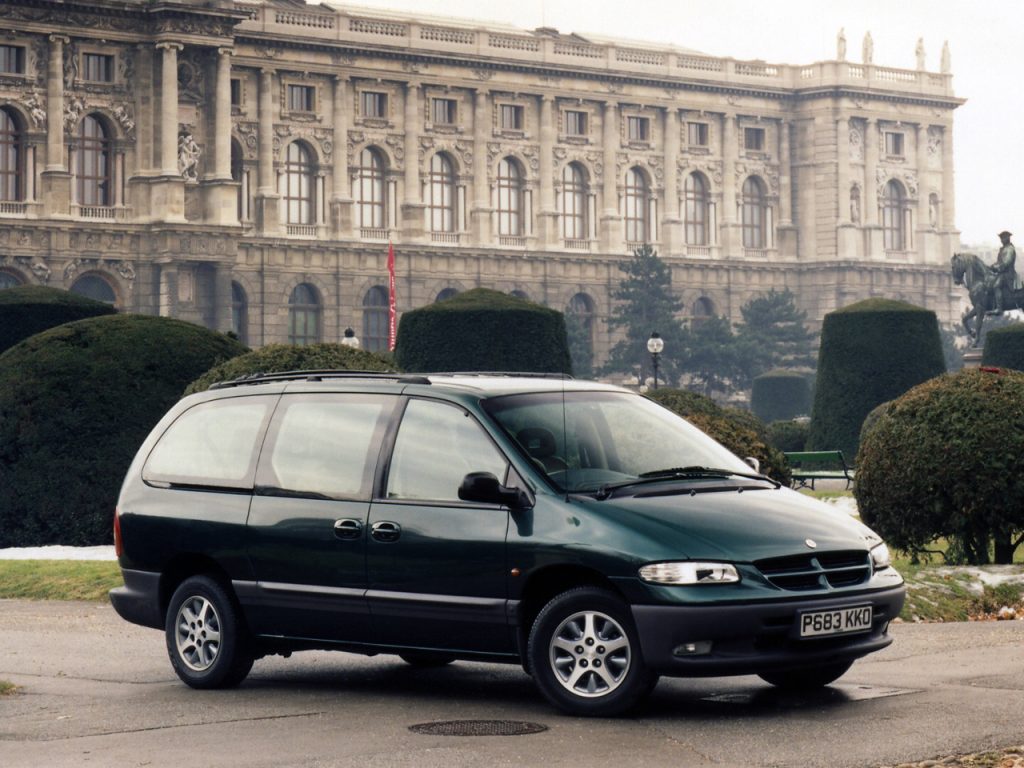
Chrysler Voyager
Chrysler couldn’t ignore the Espace’s success in Europe, and set about importing a rebadged version of the Dodge Caravan in1988. By 1991, Chrysler had started production in Europe with the second generation model, as a joint venture with Steyr-Puch.
However, it is perhaps the third generation that is the most famous, largely as it was the family holdall for Tony Blair. Again built in Graz by Steyr-Puch, it was again a rebadged Dodge Caravan, though Europe received a couple of 2.0-litre petrol engines and a 2.5-litre turbo diesel from VM Motori. It wasn’t really that safe, however, as one EuroNCAP test gave a 1999 example no points for its frontal impact. According to the report, the “body structure became unstable and the steering column was driven back into the driver’s chest and head”.
Nevertheless, the Voyager continued to be sold in the UK 2017, when Chrysler pulled out of the UK. In wider Europe, it had been sold as a Lancia since 2011.
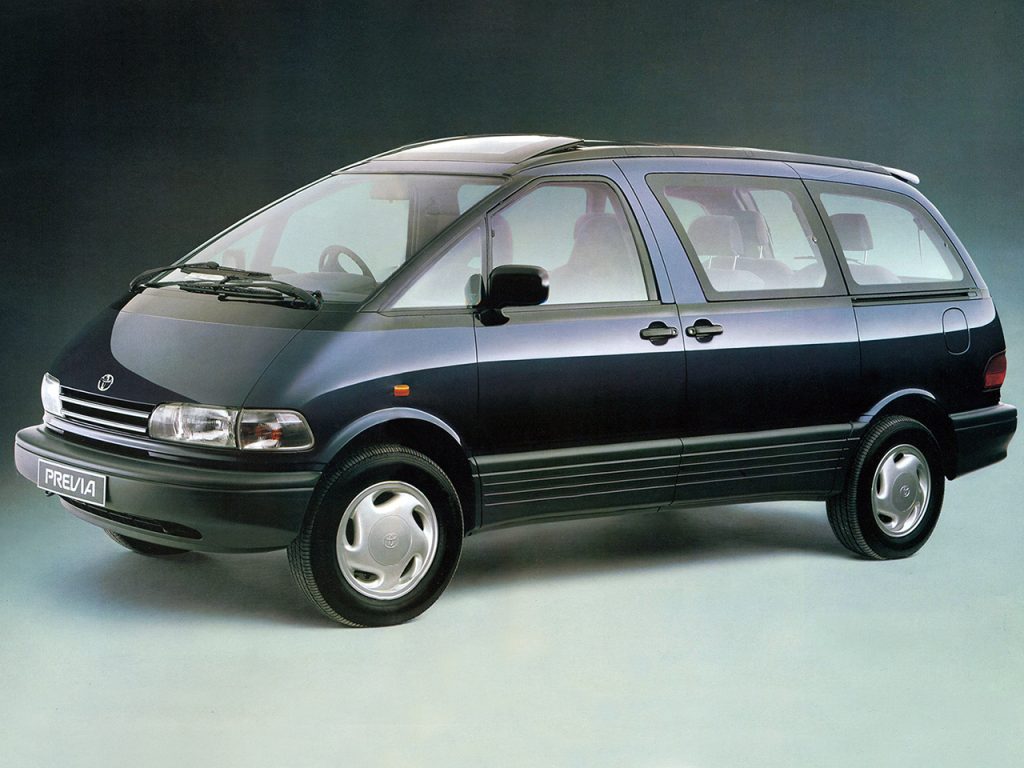
Toyota Previa
The Japanese got in on the Minivan and MPV act shortly, but it was really only Toyota (and Nissan, see below) that made huge inroads into the Espace’s market in the early 1990s – no doubt from aggrieved Espace owners (it didn’t have the greatest reputation for reliability).
Developed as a co-production between Toyota design studio Calty Design Research Incorporated and Toyota HQ, it’s quite unlike the European or even American MPV. For starters it’s mid-engined, and you can also get a supercharged version. It was also put together with a huge degree of rationality – the spark plugs were easy to find, and items such as the power steering pump, aircon compressor and alternator were in easy to reach places.
The second-generation model launched in 2000 was far more conventional, with the engine and drive to the front. Sadly, the mid-00s decline in MPV sales saw the Previa leave UK showrooms in 2005, though the nameplate lived on in other parts of the world.
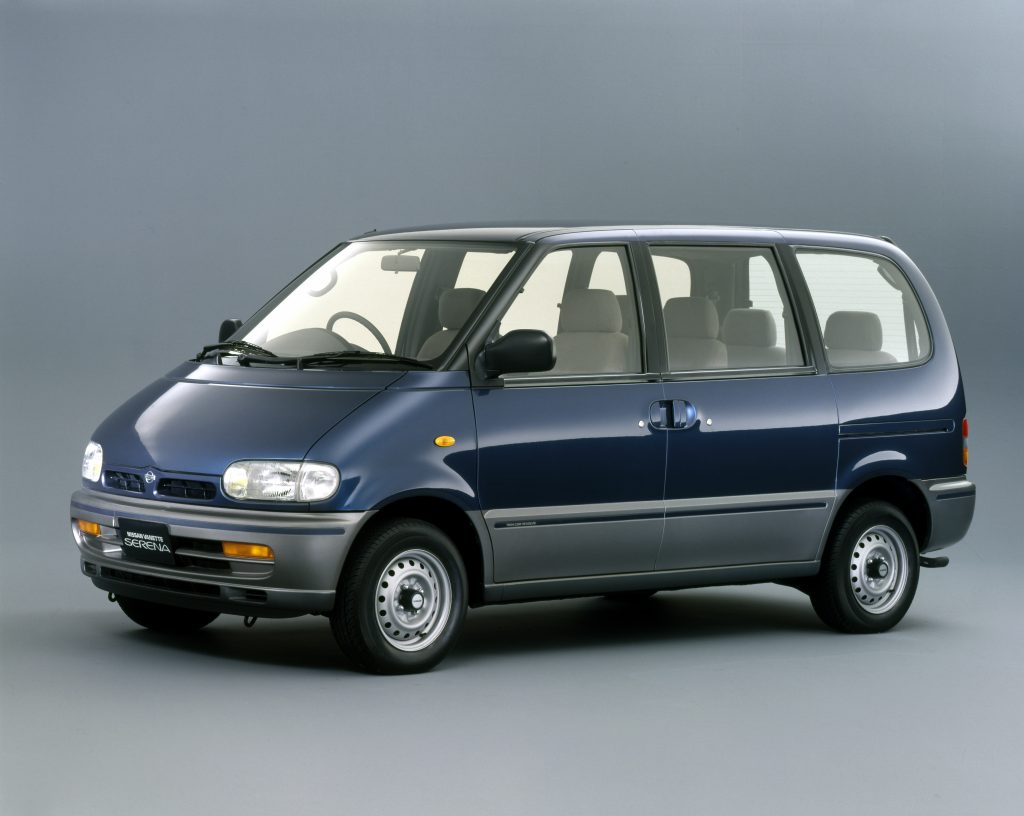
Nissan Serena
Nissan’s take on the MPV market also followed the Toyota down the mid-engined, rear-wheel drive route, with a choice of petrol and diesel four-cylinder engines. You could also get a four-wheel drive version, though any thoughts of all-wheel-drive Skyline GT-Rs should be forgotten. Auto Express once clocked an example’s 0-60mph time as one of the slowest they’d ever recorded – the diesel took 27.8 seconds to get there.
Launched in 1991 at the height of the craze, it would survive in UK showrooms until 1999, with four further generations launched for the rest of the world.
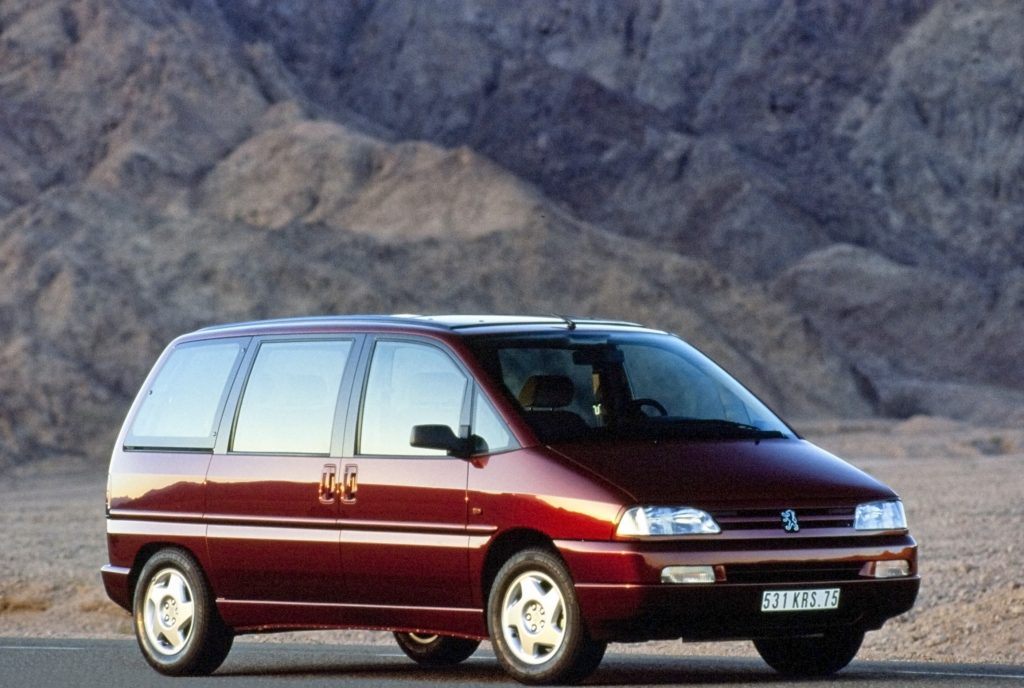
The Eurovans
By the early 1990s the market for MPVs was huge, but manufacturers grappling with new emissions targets, the after-effects of the turn-of-the-decade recession and the growth of Japanese sales on home turf found themselves unable to launch new models in time.
Instead, Citroën, Peugeot, Fiat and Lancia got together to develop badge-engineered versions of the Sevel Nord light vans. All of them used Peugeot’s XU/XUD engines, and telling the difference between all four largely came down to ‘spot the grille’. The Fiat was named after Ulysses, the Roman name for Odysseus, the hero of Homer’s Odyssey, while the Citroën was called the Synergie in the UK. Lancia’s Zeta didn’t come to the UK.
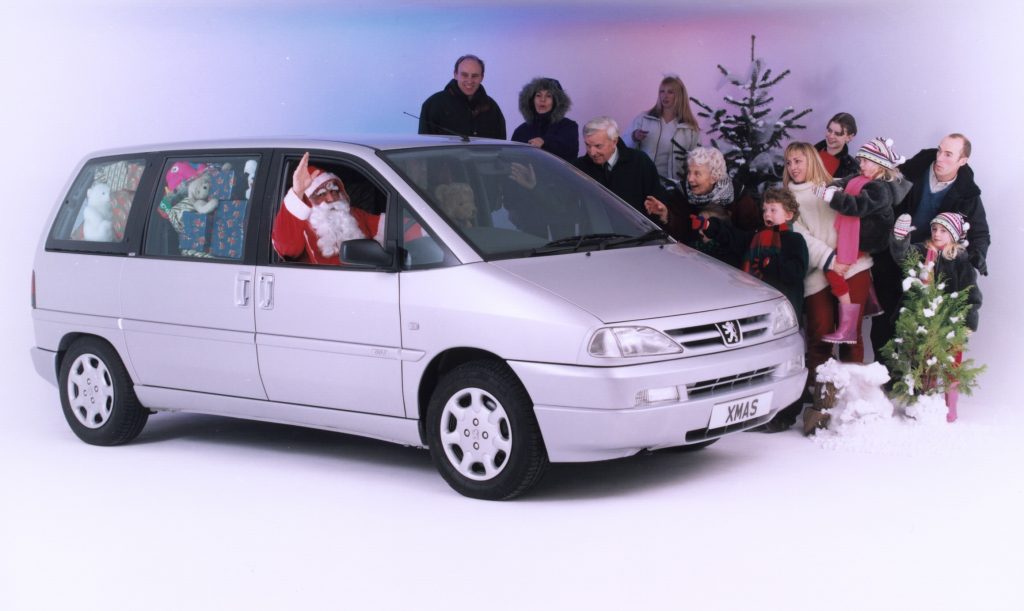
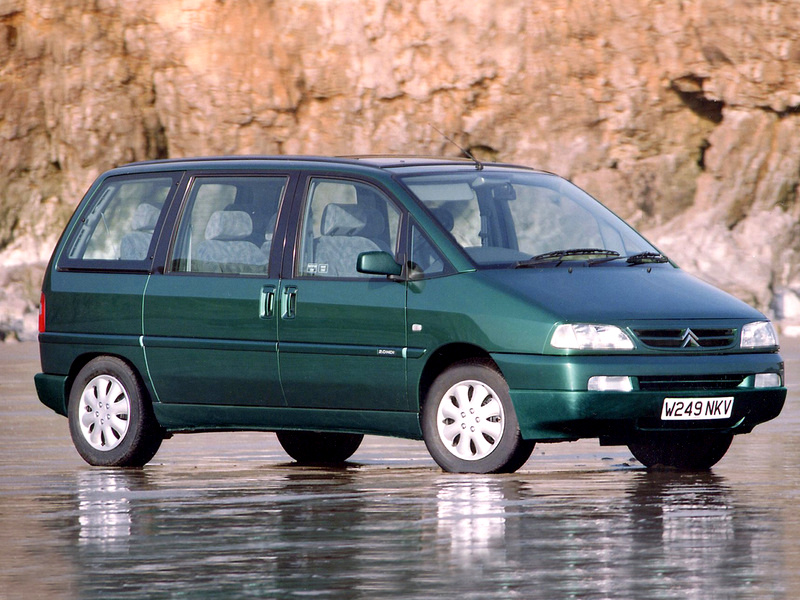
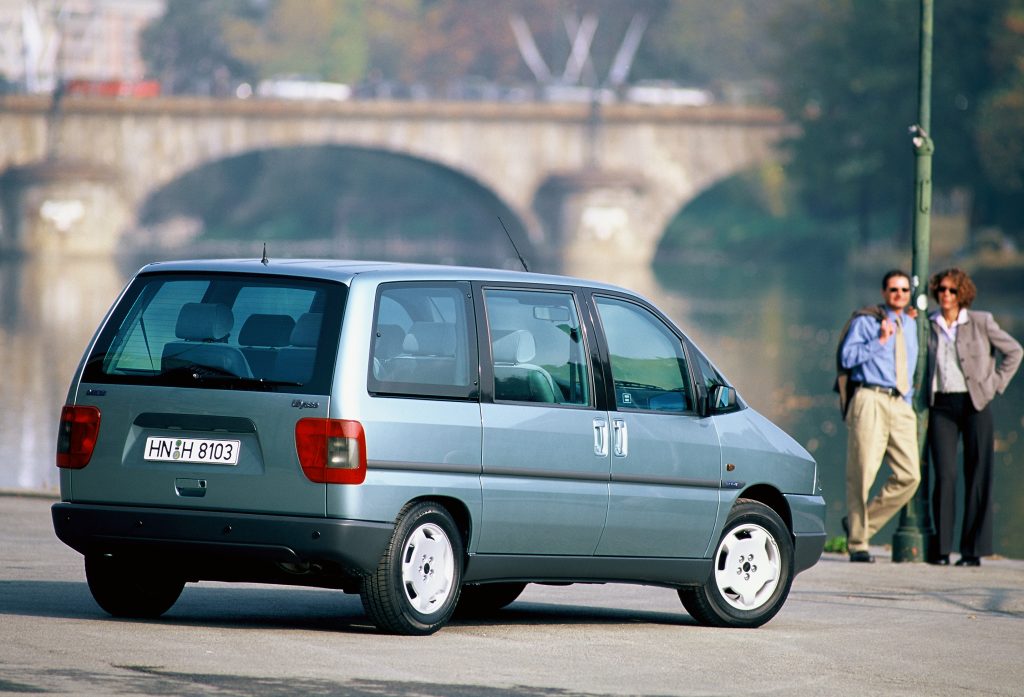
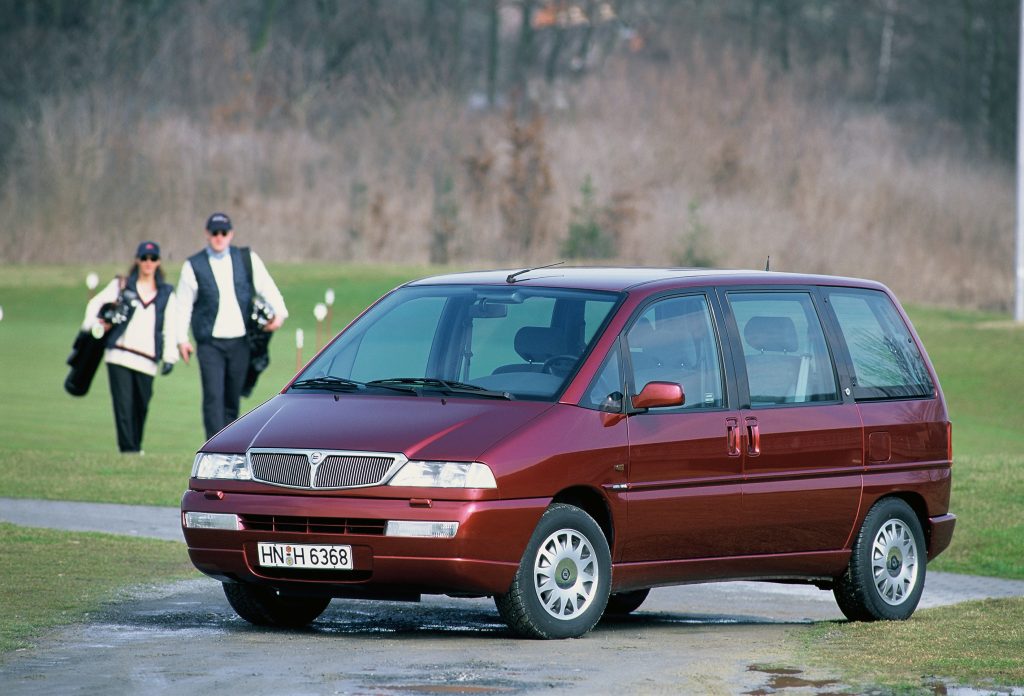
Perhaps the most interesting of the four was the Peugeot 806, largely because in 1995 some enterprising racing chaps decided to transplant an 806 body onto a 406 super touring car chassis and take on the Spa 24 Hours.
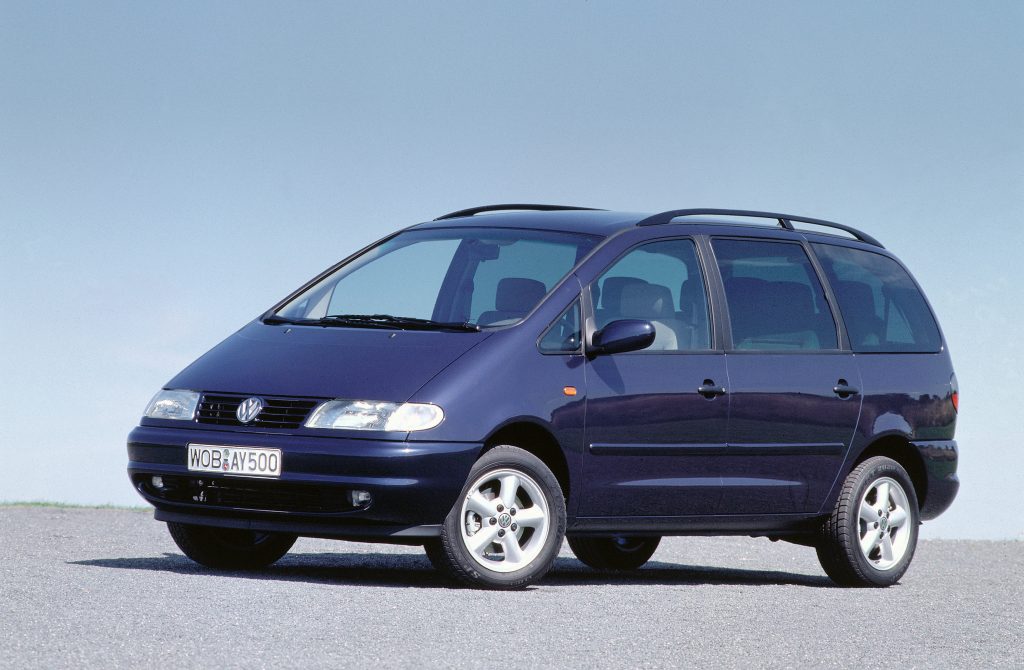
Ford Galaxy/S-MAX/Volkswagen Sharan/SEAT Alhambara
Ford and Volkswagen had recognised the Espace effect as far back as 1987, and started work in top secret together. However, it would be the best part of seven years before it would break cover, and another year before it would go on sale.
The design was intended to be a mix of VW and Ford design cues – you might see elements of the Mondeo in the nose and the Passat at the rear, and at least initially it was well received. A 2.8-litre VR6 version (like that seen in the Corrado) offered 172hp and the option of four-wheel drive, and the car was originally received well by the press and sold very well, with Ford taking the honours on sales volume. However, by 1999, the Ford was found to be the UK’s least satisfying car according to a Top Gear survey. In Germany, where VW sold the lion’s share, quality complaints were high – according to one executive I met, the Sharan was viewed as a low point in the company’s history.
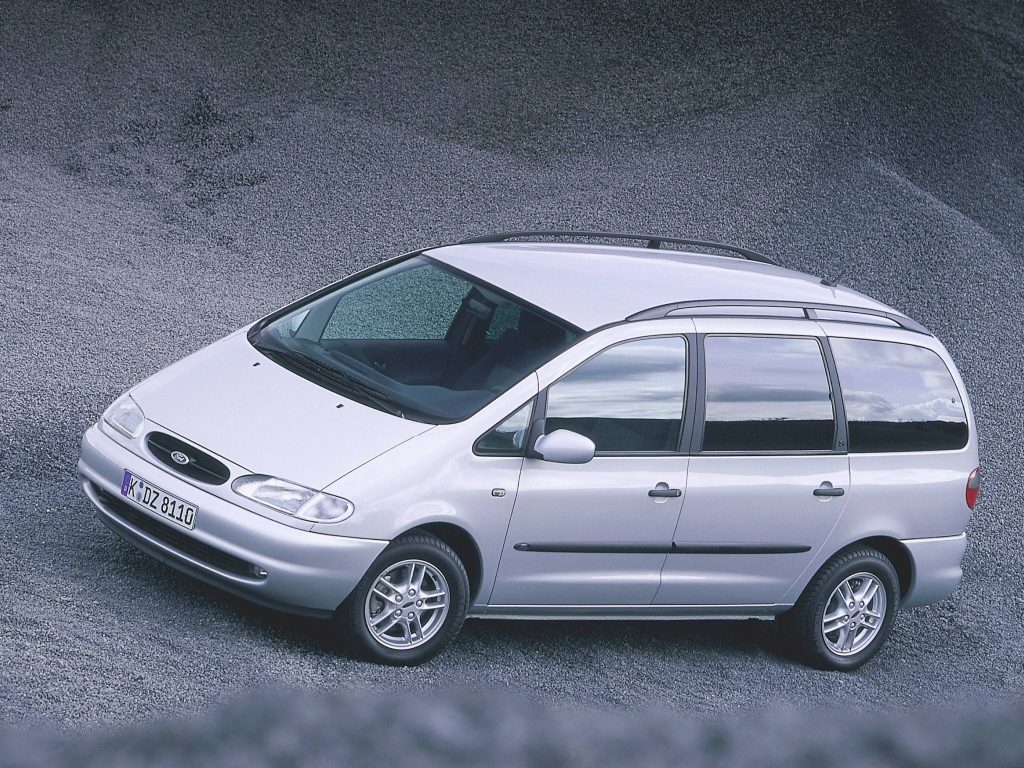
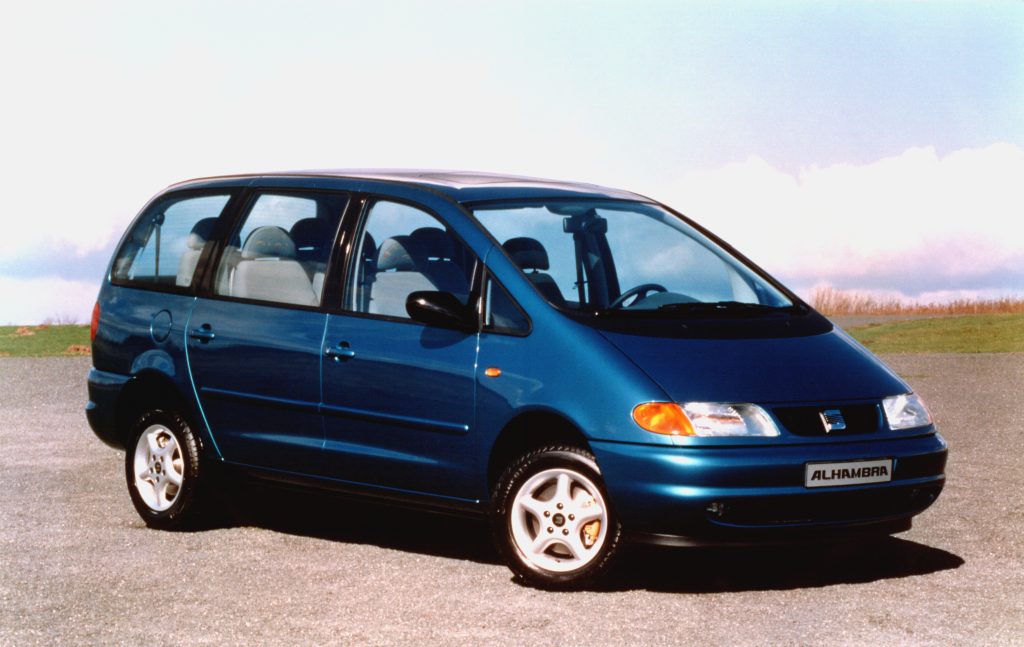
Volkswagen and SEAT would split from Ford in 2006. VW and SEAT would use the Mk1’s fundamentals until 2010, with a new model built on the same platform as the VW Passat B7 was launched. Ford, meanwhile, developed its own Galaxy on the Mondeo platform for 2006.
At the same time, Ford introduced the S-MAX, which was designed to be as sporty to drive as a saloon car. It was certainly more engaging to drive than most MPVs, particularly when equipped with the 2.5-litre, five-cylinder engine from the Focus ST. Because who doesn’t need 217bhp (and crippling fuel economy) in an MPV?

Renault Mégane Scénic
Great as the MPV was, by the mid-1990s they’d grown quite large and unwieldy. Renault recognised this, and looked back to an Anne Asensio design from 1991. It offered improved height, space and sophistication, but in a smaller footprint. The Mégane Scénic was born…
It was phenomenally popular – Renault initially only planned for 450 cars per day but such was demand, at one point they were knocking out five times that number. The mechanical basis actually dated back to the Renault 19, but it did little to dim the allure – it lived on until 2003.
One interesting curio was the RX4, which blended the 2.0-litre F4R 16v engine (also seen in the RenaultSport Clio!) with a four-wheel-drive system and body cladding. Don’t go expecting a mini-Impreza – it was designed for hill villages and had a leisurely 0-62mph time of 11.9 seconds.
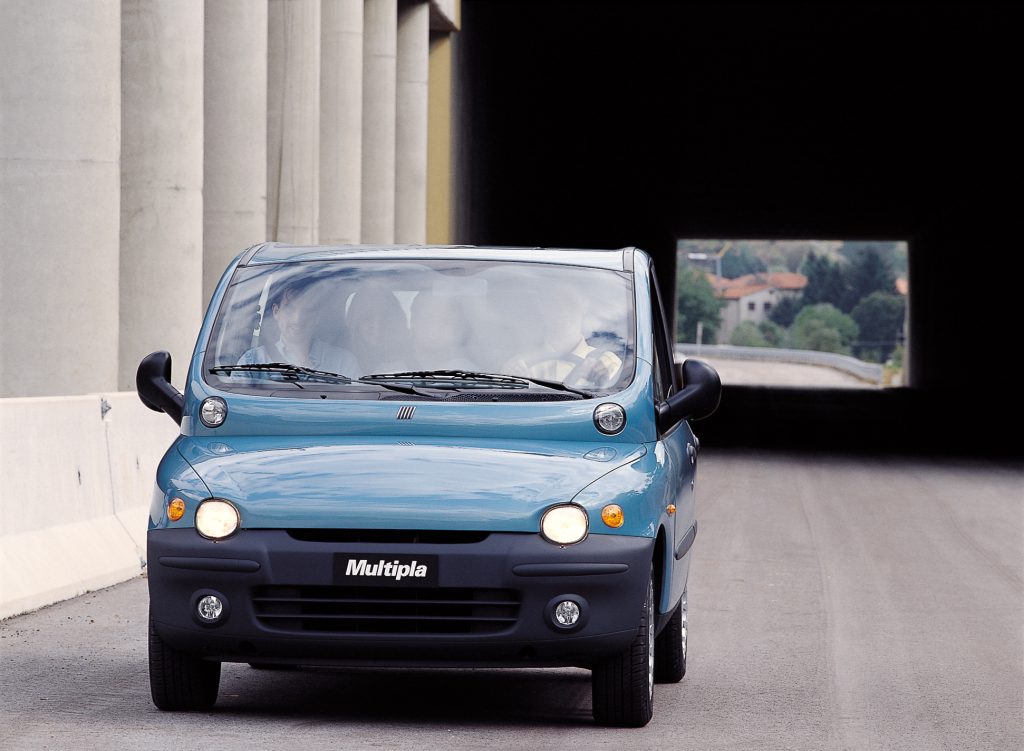
Fiat Multipla
The Fiat Multipla might be seen as the butt of many a joke due to its design nowadays, but at the time it was credited as being an industrial design marvel – it even went on display at the Museum of Modern Art in New York. It was immensely popular in its home market, but public tastes elsewhere just couldn’t abide with the looks.
However, it was all functional for a car with such a small footprint – it offered immense interior space and exceptional functionality. However, owners couldn’t get over the jokes from their neighbours… so Fiat decided to appease them with one of the blandest makeovers ever. Sales then suffered as a result…
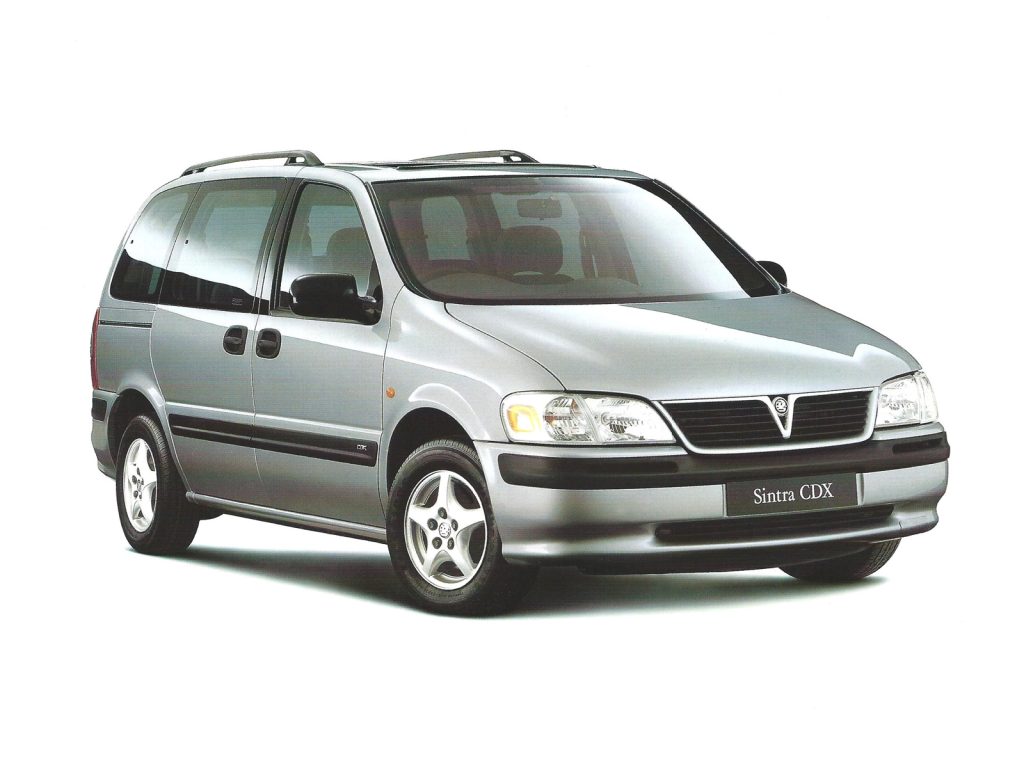
Vauxhall Sintra
General Motors had tried something spectacularly wacky in the 1980s with the Pontiac Tempest – a true concept car for the road. Sadly, like the Multipla, it was a difficult concept for the buying public, and didn’t officially make it to the UK. GM couldn’t ignore market forces, and set to work on joining the MPV gang. The Sintra was far more conventional than the Tempest, even though it was the first MPV to offer seating for seven.
However, it was also catastrophically unreliable and that, along with the propensity of the steering wheel to cause fatal neck injuries (according to Euro NCAP), led to it being taken off sale in 1999, just three years after it was introduced. Vauxhall instead focused on the smaller Zafira, which sold in far bigger quantities.
Ready for More 90s Nostalgia? Head to RADwood!
If your heart beats a little faster for sliding doors, cassette decks, and velour upholstery, then RADwood is the event for you. It’s a full-throttle celebration of all things 80s and 90s – from the everyday heroes (like those classic MPVs) to the era-defining icons.
Take a trip back in time – because the best kind of nostalgia is the kind you can drive to.
To get notified when tickets go on sale, sign up for our newsletter.
Do you have any fond memories of these 90s MPVs? We would love to hear from you at hdc@hagerty.co.uk